Phylum Annelida – Segmented Worms
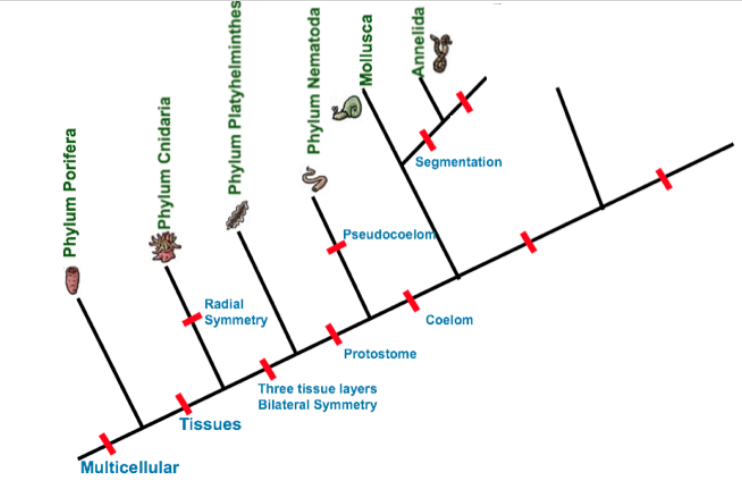 The Basics
The Basics
- Annelid -> “Little Ring”
- The first of the “higher invertebrates” and the third phyla of worms.
- The development of a true coelom led to the development and need for many new systems – circulatory/respiratory.
- First appearance ~518 Million Years ago
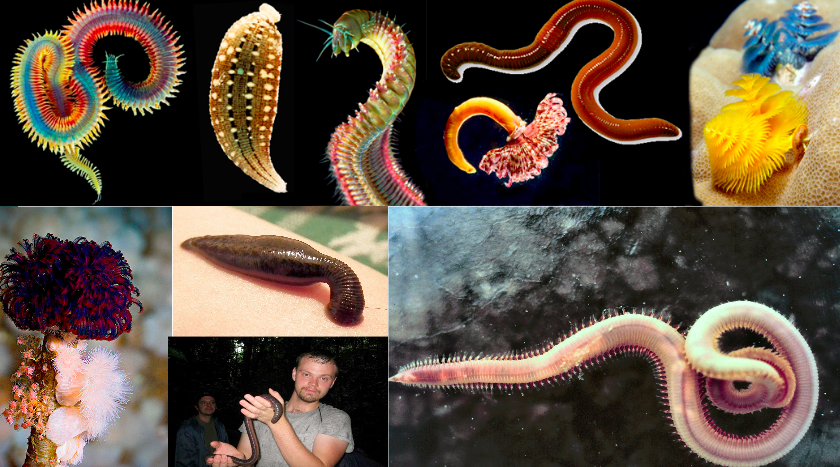
A. Evolution of Body Plan
Coelomate – Annelids are the first group to develop a true coelom (body cavity).
- A true coelom is a fluid filled space within the mesoderm.

The importance of coelom development:
1. Associated with an increase in animal size. (Animals get bigger, exchange of nutrient gases become impossible.
-
- New systems of transport could develop to support the size
2. More space for complex organs – lungs, heart, stomach could expand, contract, slide without worry.
a. Efficiency improved due to sectioning of biological roles (i.e. circulation, digestion)
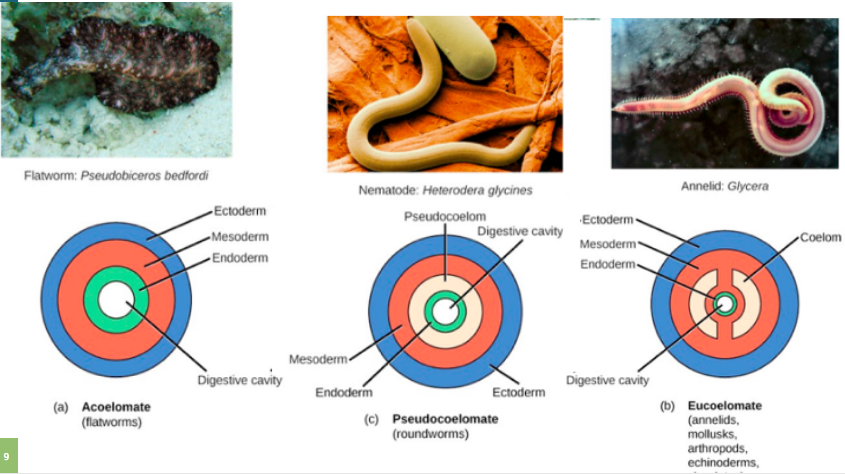
- Segmentation – Repetition of body units that contain similar structures. In annelids, they repeat the same organs in each segment. (Except for front/back)
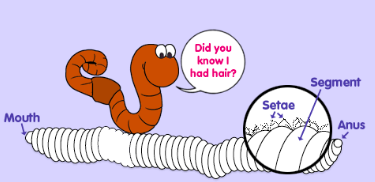
- Setae – Hair/bristles made of chitin. Help with movement.
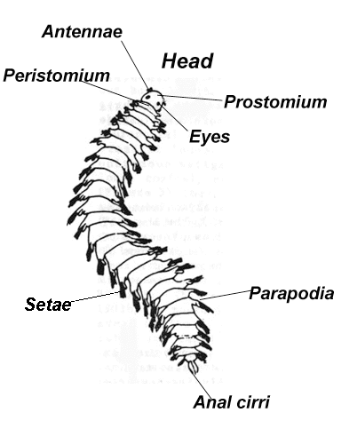
- Cephalization – Well developed brain and nervous system.
- Many accessory organs such as paired eyes and sensory tentacles.
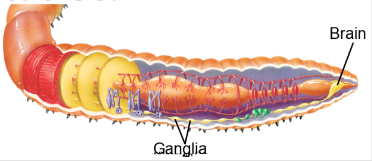
B. Feeding and Excretion
One-Way Digestive System – Mouth and Anus (What luxury!)
-
- Many feeding styles:
- Carnivores/Herbivores – Have Jaws
-
- Detritivores – Use a sticky mucus
- Filter Feeders – Brush structures
- Parasitic – Uses suckers/teeth

Case Study: How Earthworms feed
- The pharynx pumps food and soil into the esophagus.
- Food moves into the crop through muscle contractions where it can be stored.
- Food moves from the crop to the gizzard – this is a grinding organ that will grind food down into smaller parts with the help of sand in the soil.
- Nutrients are absorbed into the blood in the intestine while waste exits the anus and helps fertilize the environment.
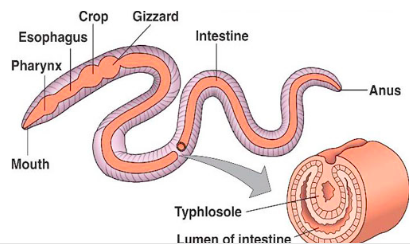
Excretion:
- Digestive waste is passed via anus.
- Cellular and fluid waste (containing nitrogen) is eliminated via nephridia.
- Nephridia are excretory organs that filter fluid in the coelom.

C. Circulation and Respiration
Due to the presence of a coelom along with increased size/complexity, annelids developed a circulatory system to transport oxygen, nutrients, and remove waste.
Circulation:
Closed- Circulatory System – Blood is always contained in vessels.
- Dorsal (top) vessels move blood towards the head.
- Ventral (bottom) vessels move blood towards the anus
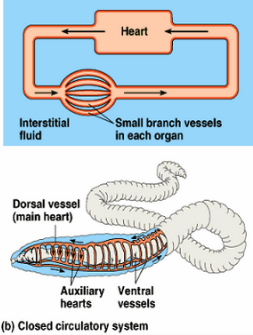
Respiration:
Cutaneous Respiration – “Skin” breathing. Gas exchange occurs through the skin and into the blood from transport. (Need moist skin)
Many aquatic worms use gills for gas exchange.

D. Reproduction
- Most annelids reproduce sexually
- Some have separate sexes with external fertilization. (ex. Marine Worms)
- Others are hermaphrodites (ex. earthworms)
Case Study: Earthworm Reproduction
- Earthworms pair up and exchange sperm for storage in special sacs.
- When eggs are ready for fertilization, the clitellum (band of specialized segments) secrets a mucus ring with sperm and eggs.

3. When eggs are fertilized in the ring, it slips off and forms a protective “cocoon”
- Eggs hatch a week later.
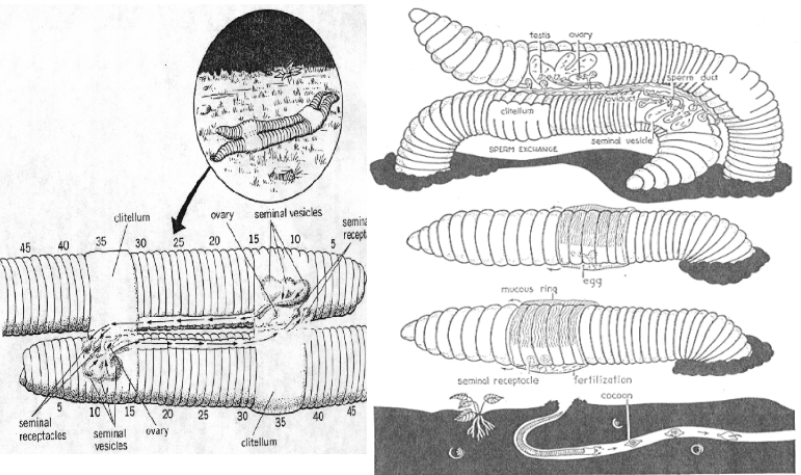
E. Major Groups of Annelids
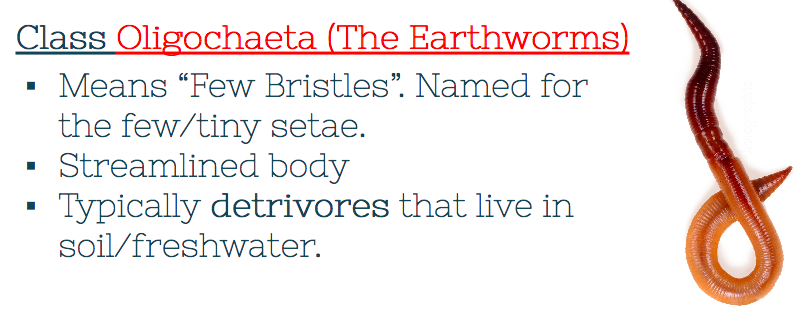
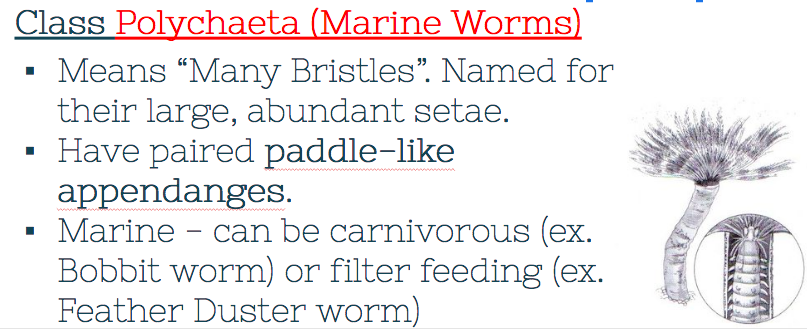
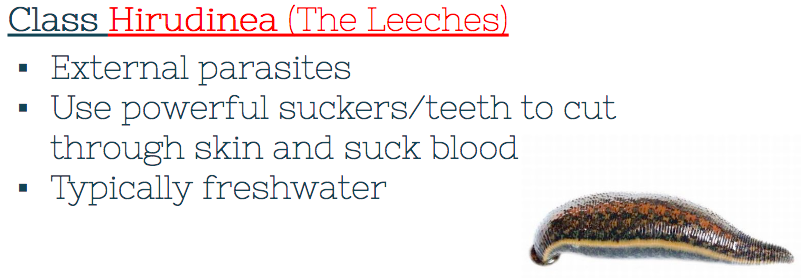
Review/Practice Questions:
- The development of the coelom was one of the most important evolutionary developments in the Kingdom Animalia. Why is it so important in the development of higher animals (such as humans)?
- A worm with many, large setae, paired parapodia, jaws was identified in the ocean. Which class is this worm from?
- Which was the first phylum to develop simple cephalization (head development). How do the individuals in that group compare to annelids in terms of cephalization? (i.e. how is it different/more advanced?)
- How do annelids excrete nitrogenous waste?
- Sketch a three panel comic illustrating the stages of sexual reproduction in earthworms. Be creative, have fun, and add labels!
Comments by shaun pletsch